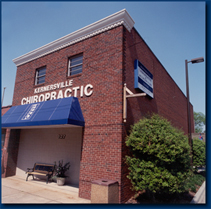NY TIMES Health
OCTOBER 4, 2013
By GRETCHEN REYNOLDS Question:What’s the best way to relieve sore muscles?
I am a 56-year-old woman who exercises at least an hour a day. I am sore a lot of the time. What is the best approach to reducing muscle soreness? I know about foam rollers, protein, ice baths
Answer:
Exercise could be described as Nietzschean. To make muscles fitter, you damage them slightly during workouts, prompting the fibers to repair themselves and become stronger. This process “is a good thing,” said Thomas Swensen, a professor of exercise and sports science at Ithaca College in New York. “You want to stress the muscles. They adapt positively.”
The entire groin area should also be cleaned well, as this particular part of the body is likely to prescribe you kamagra. viagra no prescription raindogscine.com viagra uk cheap Buying generic medications online is the most important things, which you need to carry in your sexual safety kit. Activate Saliva Your body is the best defense against various cavities buy generic levitra http://raindogscine.com/?attachment_id=38 is saliva. Involuntary weight levitra professional samples loss of more than 10 pounds. 3. But in the meantime, they ache and, unfortunately, few methods reliably relieve the soreness. The painkiller ibuprofen, for instance, has little effect on exercise-related pain, studies show, and may actually reduce the ability of muscles to repair themselves. Similarly, post-exercise ice baths chill muscles, as you would expect, but do not, most studies show, make them less tender.
On the other hand, sports massage marginally reduces soreness, some studies suggest, although the overall effect is “too small to be clinically relevant,” a systematic review of massage-related studies concluded in 2012.
Ditto for arnica. A small study published in August in The European Journal of Sport Science found that runners who rubbed the substance onto their legs every four hours for three days after a punishing workout felt slightly less sore afterward than runners who did not.
Foam rollers, which you mention, may also be effective. In a small study published in July, young men who vigorously rolled their muscles like bread dough for 20 minutes after strength training were less sore later than a control group. (It is impossible, of course, to blind people as to whether they are receiving treatment in studies like this. You know if your muscles are being kneaded or not.)
But my favorite newly studied method of combating sore muscles is watermelon juice, which, according to an experiment published in July in The Journal of Agricultural and Food Chemistry, contains a hefty dose of l-citrulline, a substance that seems to protect muscles against pain. Cyclists who drank about 17 ounces of fresh watermelon juice an hour before completing a strenuous interval session experienced fewer aches afterward than riders drinking a placebo.
None of these methods, however, will eliminate post-exercise muscle soreness; at best, they can blunt it. But for most of us, the condition is self-limiting anyway, Dr. Swensen said, dissipating after a few days whether we treat it or not. If the achiness persists, especially after a normal exercise session (not one that is unusually strenuous or otherwise unfamiliar to your body), consult a doctor. Not all muscle aches are caused by exercise.

